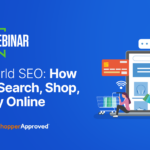Over half (53%) of all consumers in the U.S. turn to a search engine like Google to find information on a product before purchase.
Yes, organic search is still the highest ROI channel.
If you’re not incorporating SEO into your digital marketing strategy, you may be missing out on a large opportunity.
It’s 2022, and SEO is more important than ever for direct-to-consumer (DTC) ecommerce brands.
Done right, you can use educational content to achieve high-ranking search results that boost the authority of your brand and bring in more qualified customers than ever before – and have the ability to attribute revenue back to your content efforts.
But how do you know what’s working and what’s not?
We’ll give you our cheat sheet of three potential mistakes you could be making, from content creation to SEO attribution.
Then, we’ll help you learn how to uncover what’s truly working versus what isn’t, so you can prove real ROI on your intensive content work.
Mistake 1: Not Thinking About The Revenue Impact & End Goals Of Your Educational SEO Content
Having a blog and publishing regular content is time-consuming.
And when other priorities pile up, it can be easy to push SEO and content creation to the bottom of your list – that’s understandable.
Marketers like you constantly have numerous ongoing campaigns and no shortage of suggestions for what to do next from team members across the company.
So why spend time on SEO?
For ecommerce sites, it all comes down to revenue.
Your content can bring new eyes to your website, nurture people already in your funnel, and eventually be the part of your digital strategy that convinces a website browser to become a new customer.
As you can see, it’s very important to think about your SEO content and what its end goals are.
The Solution: Plan SEO Attribution From The Get-Go
Before launching your digital marketing strategy, think about how you plan to track the impact of your blog on your bottom line.
Make sure you can clearly see how SEO-centric content funnels readers into shoppers.
Start by finding a platform that can show you the impact of all your marketing and organic content, plus help you understand the exact role SEO plays and which part of the funnel it impacts.
Mistake 2: Picking Content Ideas Without A Solid Strategy
You likely know a lot about what your potential customers want.
Whatever you sell, whether it’s razors, skin serums, bidets, you name it, you know that there are endless amounts of information to share on it that actually enriches your readers’ lives.
You may live and breathe weighted jump rope culture and feel like you know exactly what your readers want.
But that doesn’t mean you should skip the process of topic and keyword research.
What you instinctively think will resonate with your readers might not necessarily be the right content.
You may miss out on additional high-quality ideas if you don’t create content based on a strategy.
The Solution: Start With An Idea, Then Confirm It With Research
First things first: you can start with your instincts for topics, then verify them.
Next, based on what you know about your business, decide on broad categories for content that people might want to consume.
For instance, if you’re a makeup company, instinctual topics might include:
- Beauty tutorials
- Ingredient deep-dives
- New beauty trends
Once you have basic ideas for your content, use those to narrow your ideas down to specific keywords. You can do this with free methods like Google’s suggested searches or other paid keyword research tools.
Then, take it a step further. Build out your content ideas with user interviews or by searching through social media comments for frequently asked questions and trending topics.
After you’ve produced a list of keywords, you can start to create content on the topic.
Finally, continue to refine those steps into a strategy based on what’s actually performing by using attribution.
With an attribution platform that can track how different blog categories on your site contribute to conversions, you can zero in on topics you know perform well, then repeat your keyword research to further improve your content.
Mistake 3: Prioritizing Vanity Metrics Over Revenue
Have someone on your team who isn’t convinced as to why you need to focus on SEO?
Tell them that nearly half of marketers say organic search has a higher ROI than any other marketing channel.
Better yet – show them.
SEO is so much more than just a way to bring in traffic to your website.
While vanity metrics like pageviews are exciting, there are better ways to track the success of your SEO.
Instead, you should be tying your efforts back to conversions and revenue.
If you’re not tracking the way your SEO strategy influences these things, you’re missing out on seeing just how impactful this channel could be, which in turn influences how much money and time your company will be willing to devote to SEO content.
The Solution: Monitor & Present These SEO KPIs
Avoid only reporting vanity metrics like pageviews, conversions, and conversion rates.
You should also be monitoring:
- Monthly recurring revenue from SEO.
- Order value.
- Time to conversion for paths influenced by SEO.
window.addEventListener( ‘load’, function() {
setTimeout(function(){ striggerEvent( ‘load2’ ); }, 2000);
});
window.addEventListener( ‘load2’, function() {
if( sopp != ‘yes’ && addtl_consent != ‘1~’ && !ss_u ){
!function(f,b,e,v,n,t,s)
{if(f.fbq)return;n=f.fbq=function(){n.callMethod?
n.callMethod.apply(n,arguments):n.queue.push(arguments)};
if(!f._fbq)f._fbq=n;n.push=n;n.loaded=!0;n.version=’2.0′;
n.queue=[];t=b.createElement(e);t.async=!0;
t.src=v;s=b.getElementsByTagName(e)[0];
s.parentNode.insertBefore(t,s)}(window,document,’script’,
‘https://connect.facebook.net/en_US/fbevents.js’);
if( typeof sopp !== “undefined” && sopp === ‘yes’ ){
fbq(‘dataProcessingOptions’, [‘LDU’], 1, 1000);
}else{
fbq(‘dataProcessingOptions’, []);
}
fbq(‘init’, ‘1321385257908563’);
fbq(‘init’, ‘448279782031290’); // custom pixel
fbq(‘track’, ‘PageView’);
fbq(‘trackSingle’, ‘1321385257908563’, ‘ViewContent’, {
content_name: ‘ecommerce-seo-strategy-mistakes-rockerbox-spcs’,
content_category: ‘digital strategy-digital ecommerce seo seo-strategy sponsored-post’
});
}
});


